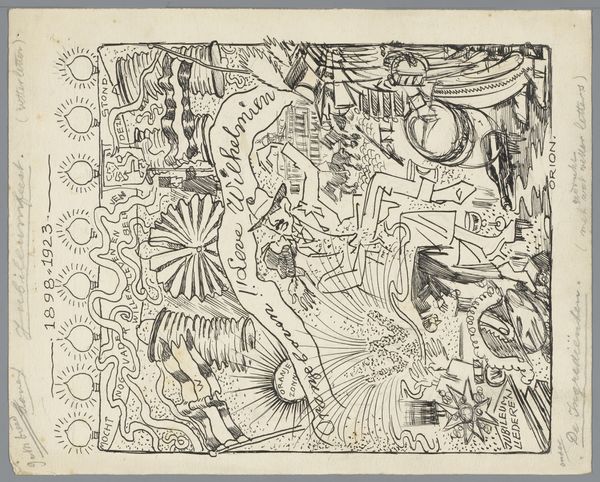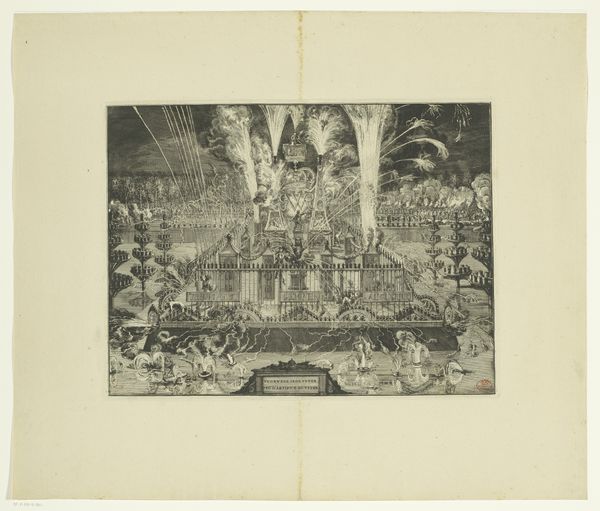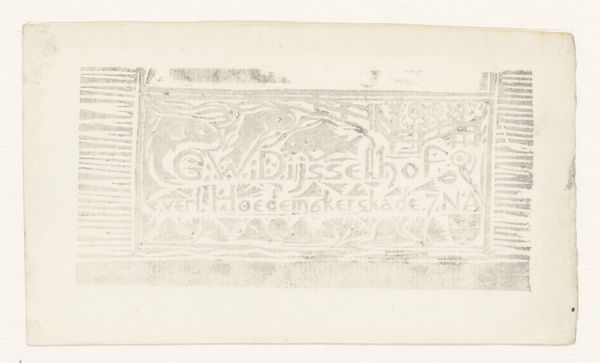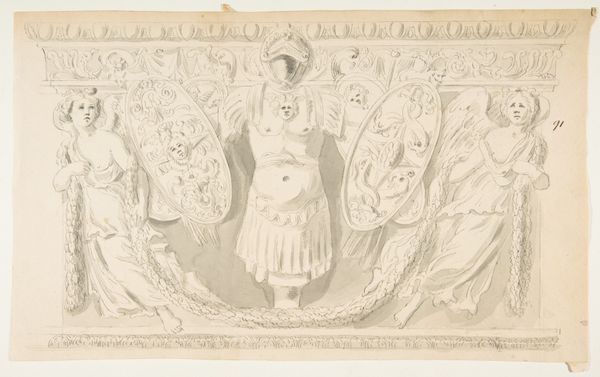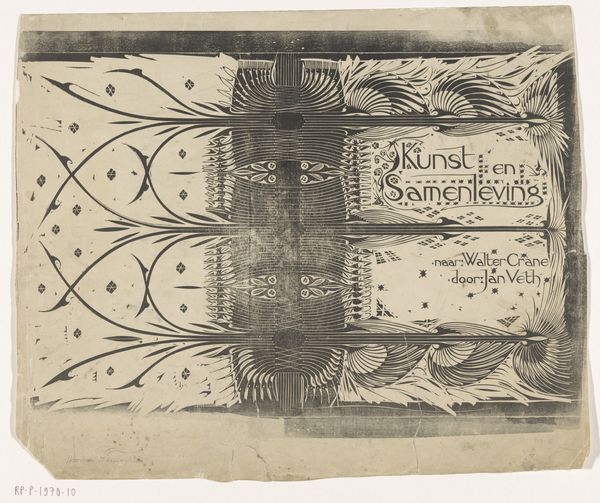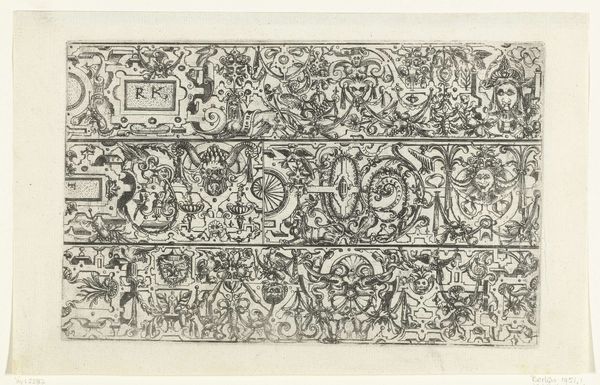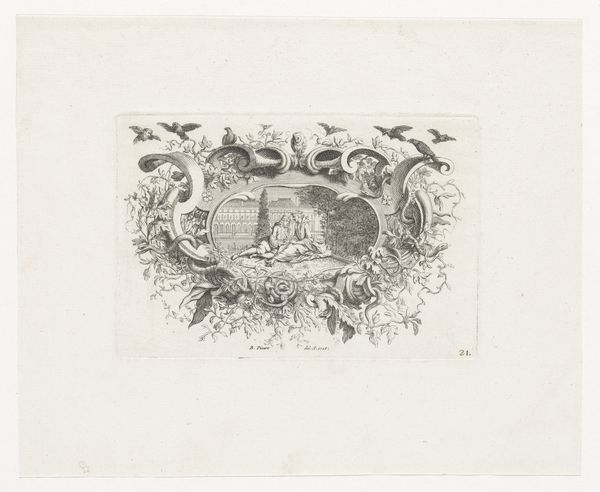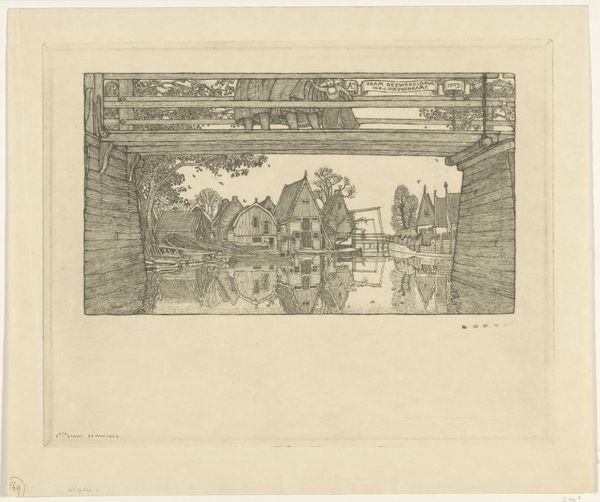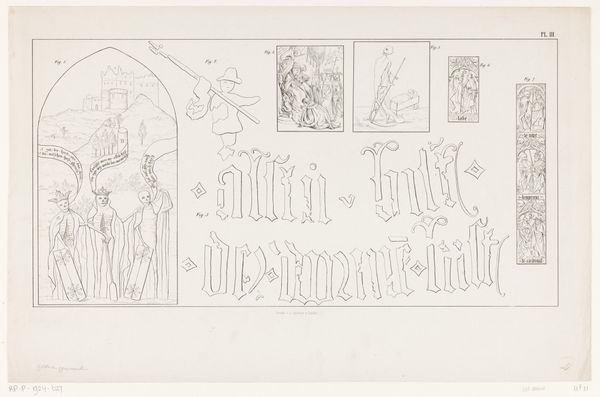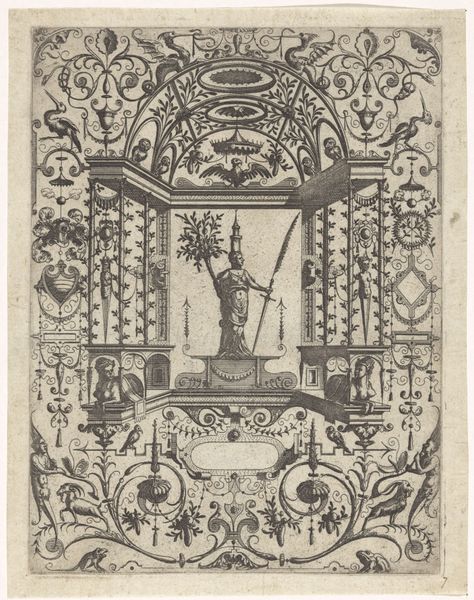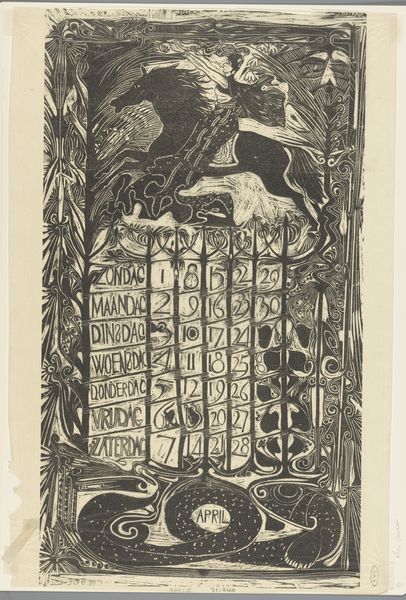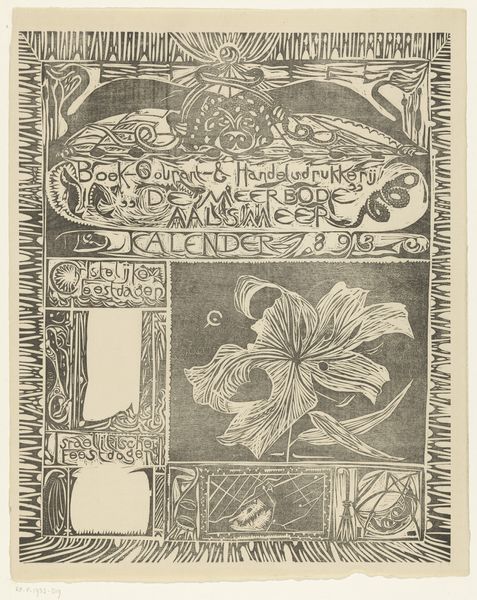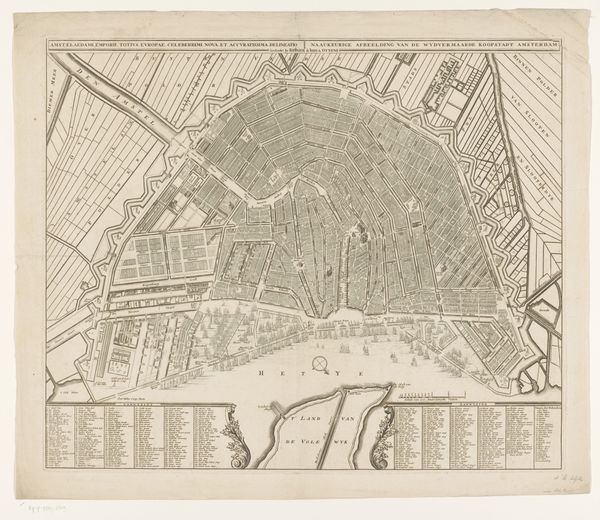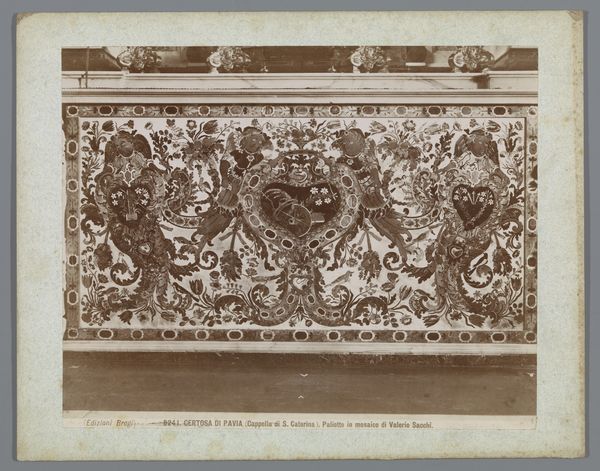
Oorkonde van de Vereeniging ter bevordering van de belangen des Boekhandels met drukker, papierrollen en ornamentiek 1892
0:00
0:00
drawing, graphic-art, print, paper, ink, poster
#
drawing
#
graphic-art
#
art-nouveau
#
pen drawing
# print
#
pen illustration
#
pen sketch
#
paper
#
ink line art
#
ink
#
geometric
#
line
#
decorative-art
#
poster
Dimensions: height 439 mm, width 709 mm
Copyright: Rijks Museum: Open Domain
Editor: This is a drawing from 1892 by Carel Adolph Lion Cachet, entitled "Oorkonde van de Vereeniging ter bevordering van de belangen des Boekhandels met drukker, papierrollen en ornamentiek." It seems incredibly detailed for a promotional poster, almost like an official decree, emphasizing the importance of the book trade. How would you interpret the choices the artist made here? Curator: Well, consider the materials – ink on paper, produced through printing. This artwork functions both as a piece of graphic art, aimed at mass consumption, and simultaneously elevates the book trade through ornate details typically associated with “high art.” This tension is at the heart of understanding this piece. Editor: Interesting. So the very *act* of producing a decorative, almost artisanal poster is part of the statement? Curator: Precisely. It’s not just about the content—the promotion of books—but also about Lion Cachet’s intervention in blurring boundaries between commercial printing and the more individualized craft traditions. The Art Nouveau style, with its flowing lines, further reinforces the value given to the printed material and the labour involved in its making, doesn't it? How might that influence a viewer? Editor: I hadn't thought of the Art Nouveau style itself being a statement about the book trade and the printing press... Now that you mention the process, all those tiny details feel very deliberate and precise, not easily churned out on an early printing press. So it’s advertising craftsmanship through craftsmanship? Curator: Exactly. It prompts us to consider the social and economic context. Who was this poster trying to reach, and what kind of value did they place on books, and on the labor involved in their production? What statement is made about industrialization's role in producing what should be elevated as Art? Editor: That makes me rethink the whole purpose of such decorative commercial art at the time. It’s not *just* an advertisement, it's advocating for something. Curator: Right! Examining it from a materialist perspective brings those layers of meaning to the surface. I find that I really appreciate that challenge to traditional boundaries between art and commerce that it presents. Editor: Absolutely, thinking about it this way, it moves beyond being just a pretty image; it’s a document of its time, reflecting attitudes towards production and value.
Comments
No comments
Be the first to comment and join the conversation on the ultimate creative platform.
